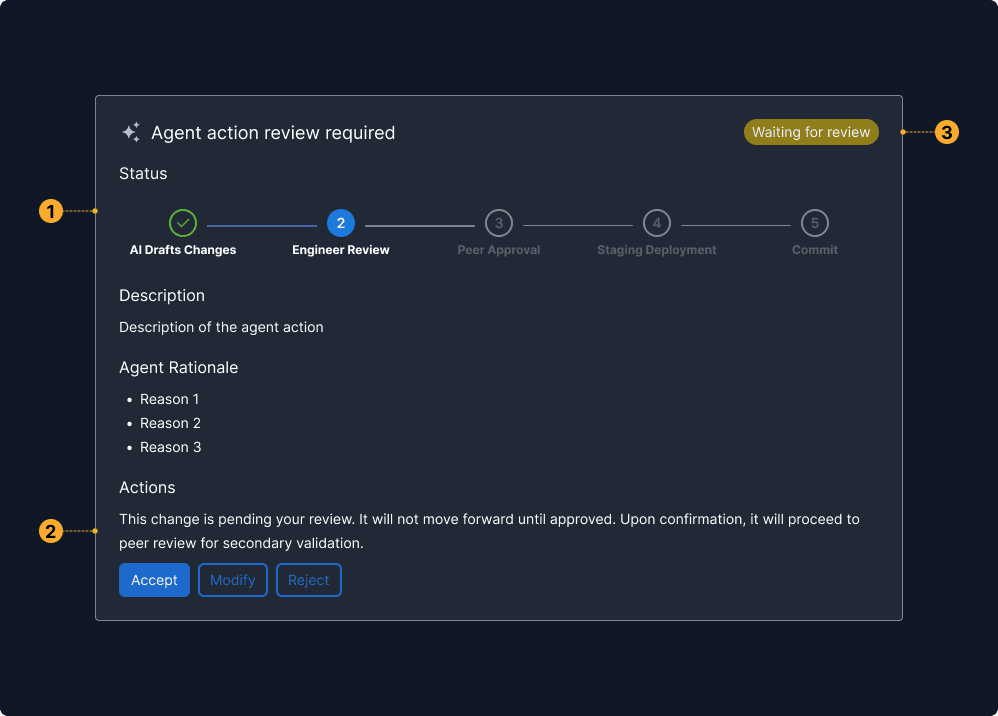
Collaboration
Design for shared effort and mutual input
What it means
Why this matters
Related patterns

Agent proactively initiates based on context
Allow the agent to proactively detect issues or make suggestions, especially when it has useful context the user may not.
Build on Each Other’s Contributions
Design interactions so the agent can refine its outputs in response to human edits or questions. Keep the flow continuous and collaborative.

Keep AI suggestions non-intrusive
Present changes as proposals, not automatic edits. Let users review, accept, modify, or reject.
Work in shared view
Both AI and human should operate on the same content in the same workspace. Transparency builds clarity and trust.
User always has final say
The human is the editor-in-chief. AI assists, but never publishes or commits changes on its own.
Make editing modalities clear
Let users choose how the AI helps - proofreading, rewriting, suggesting changes, etc. Provide flexible control modes, not just one-size-fits-all.

Clear stage-based ownership
Break workflows into visible stages and indicate who leads each one (e.g., system, user, peer reviewer). This reduces ambiguity and improves accountability.
Attribute every action
Label actions clearly as system-initiated or human-initiated. This helps users interpret intent and trust the flow.
Signal when it’s the user’s turn
Use prompts, buttons, or callouts to indicate when the system is waiting for user input. Avoid passive steps that could confuse ownership.